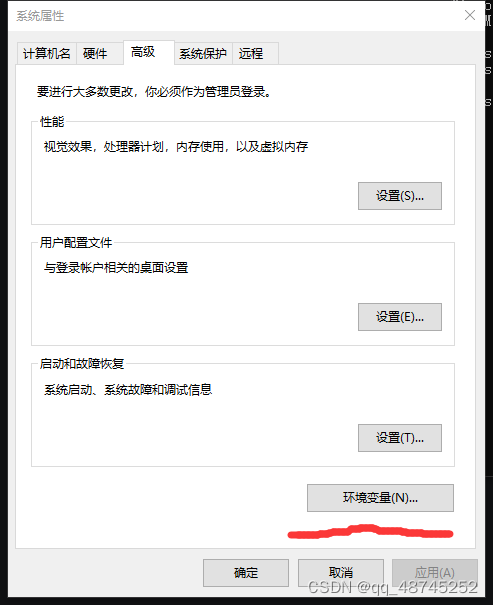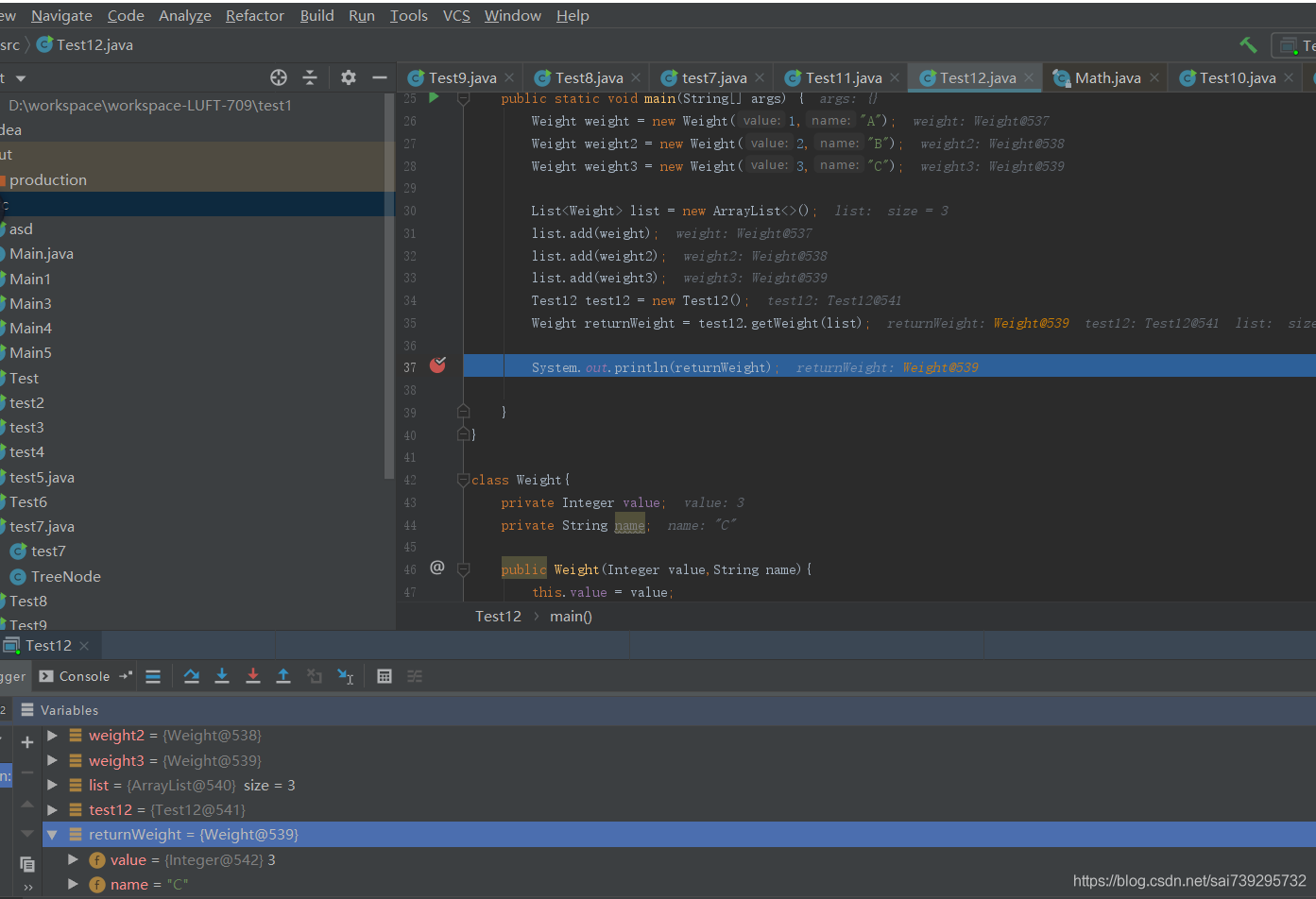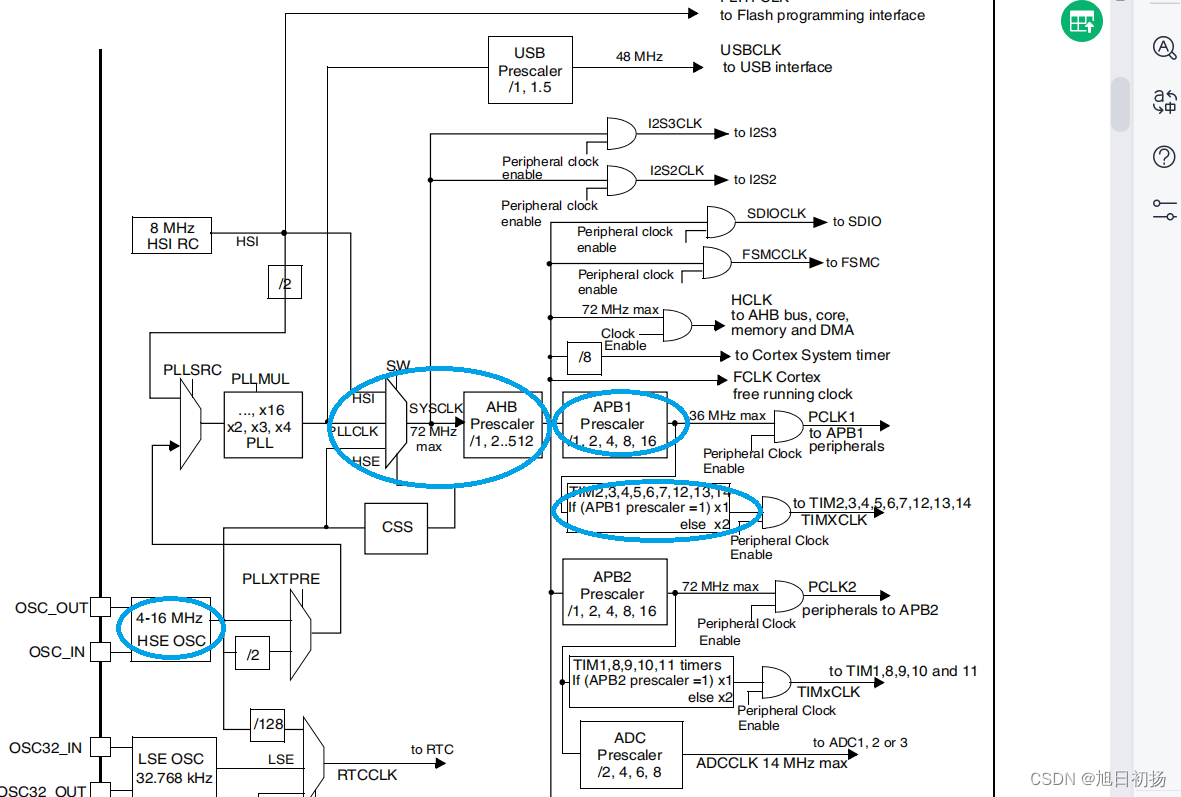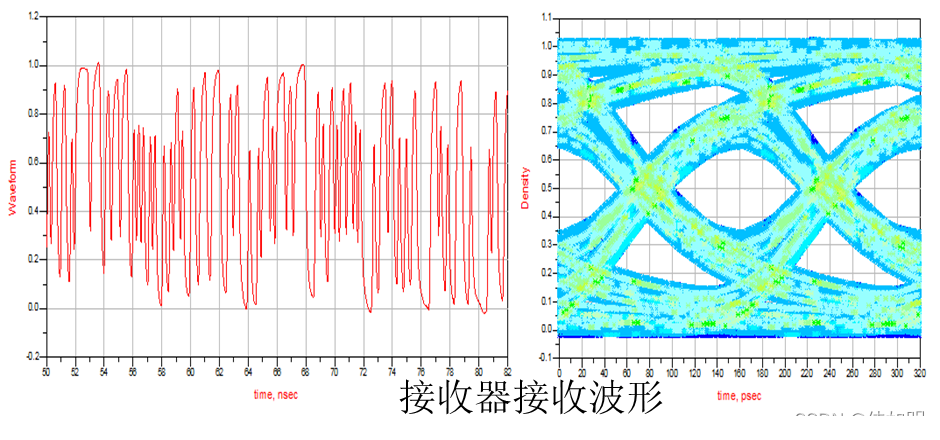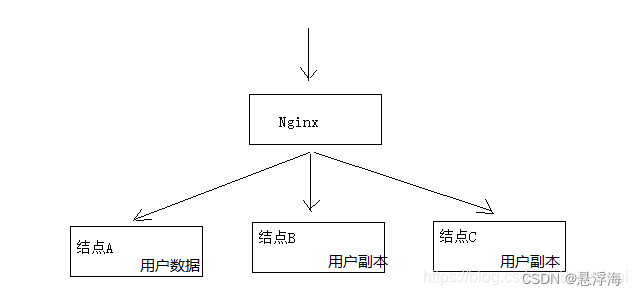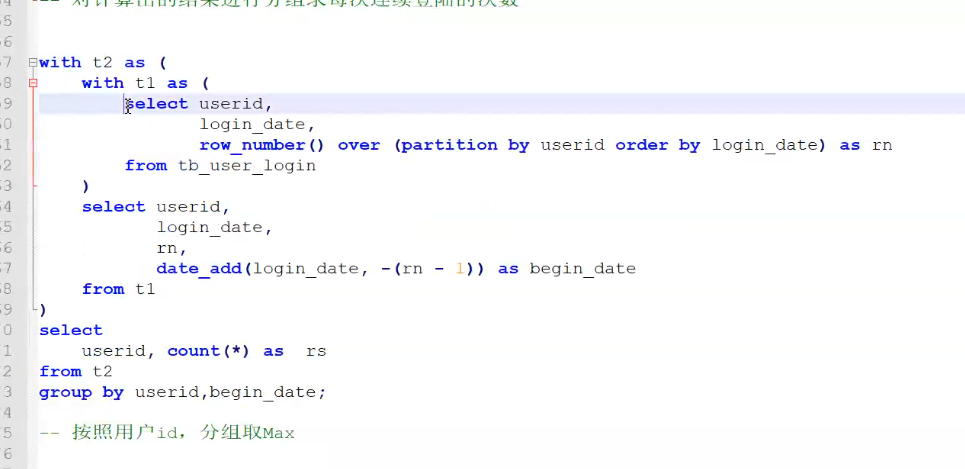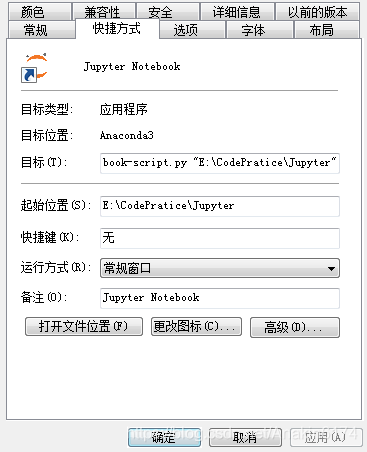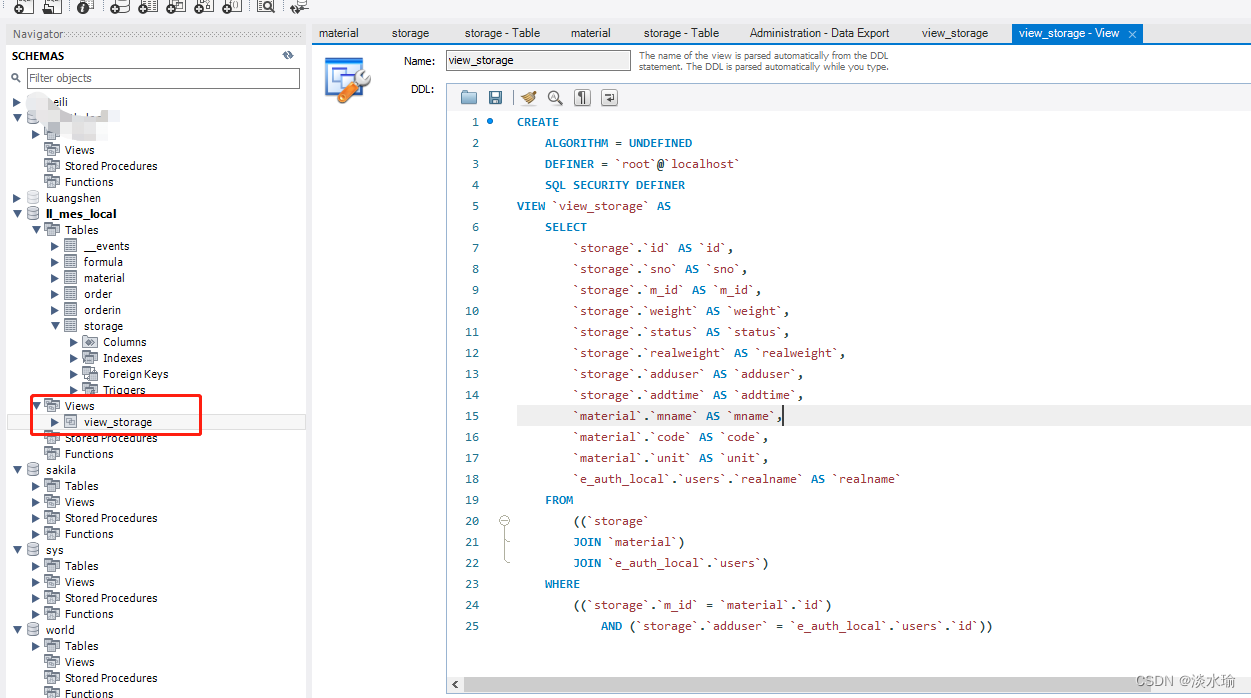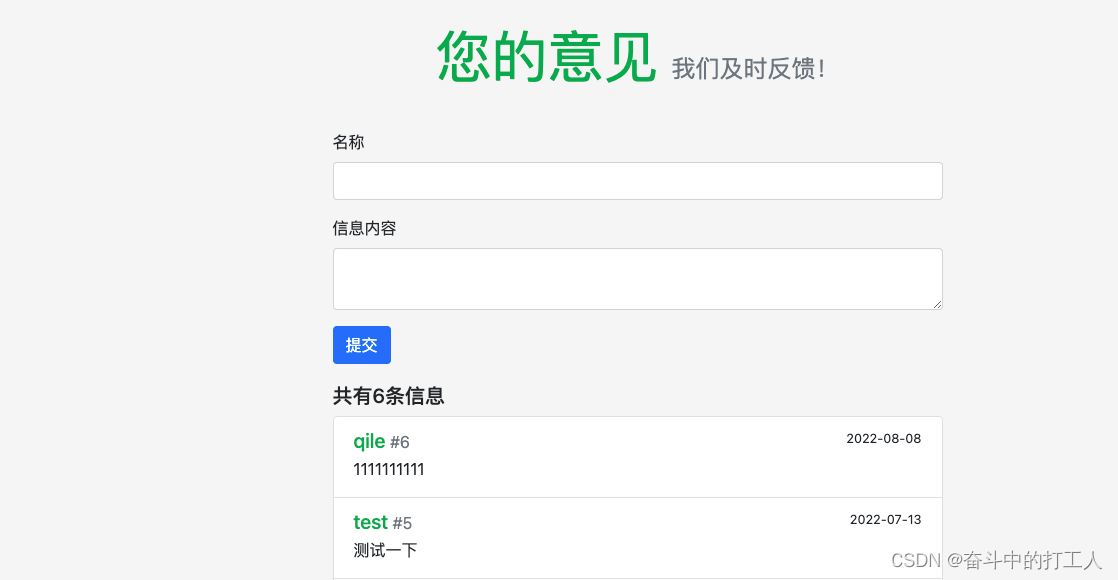当前位置:网站首页>【机器学习】支持向量机(SVM)代码练习
【机器学习】支持向量机(SVM)代码练习
2022-08-09 07:18:00 【51CTO】
本课程是中国大学慕课《机器学习》的“支持向量机”章节的课后代码。
课程地址:
https://www.icourse163.org/course/WZU-1464096179
课程完整代码:
https://github.com/fengdu78/WZU-machine-learning-course
代码修改并注释:黄海广,[email protected]
在本练习中,我们将使用支持向量机(SVM)来构建垃圾邮件分类器。我们将从一些简单的2D数据集开始使用SVM来查看它们的工作原理。然后,我们将对一组原始电子邮件进行一些预处理工作,并使用SVM在处理的电子邮件上构建分类器,以确定它们是否为垃圾邮件。
我们要做的第一件事是看一个简单的二维数据集,看看线性SVM如何对数据集进行不同的C值(类似于线性/逻辑回归中的正则化项)。
我们将其用散点图表示,其中类标签由符号表示(+表示正类,o表示负类)。
X1 | X2 | y | |
0 | 1.9643 | 4.5957 | 1 |
1 | 2.2753 | 3.8589 | 1 |
2 | 2.9781 | 4.5651 | 1 |
3 | 2.9320 | 3.5519 | 1 |
4 | 3.5772 | 2.8560 | 1 |
positive
=
data1[
data1[
'y']
.
isin([
1])]
negative
=
data1[
data1[
'y']
.
isin([
0])]
fig,
ax
=
plt
.
subplots(
figsize
=(
12,
8))
ax
.
scatter(
positive[
'X1'],
positive[
'X2'],
s
=
50,
marker
=
'x',
label
=
'Positive')
ax
.
scatter(
negative[
'X1'],
negative[
'X2'],
s
=
50,
marker
=
'o',
label
=
'Negative')
ax
.
legend()
plt
.
show()
- 1.
- 2.
- 3.
- 4.
- 5.
- 6.
- 7.
- 8.

请注意,还有一个异常的正例在其他样本之外。 这些类仍然是线性分离的,但它非常紧凑。我们要训练线性支持向量机来学习类边界。在这个练习中,我们没有从头开始执行SVM的任务,所以我要用scikit-learn。
首先,我们使用 C=1 看下结果如何。
其次,让我们看看如果C的值越大,会发生什么
这次我们得到了训练数据的完美分类,但是通过增加C的值,我们创建了一个不再适合数据的决策边界。我们可以通过查看每个类别预测的置信水平来看出这一点,这是该点与超平面距离的函数。
data1[
'SVM 1 Confidence']
=
svc
.
decision_function(
data1[[
'X1',
'X2']])
fig,
ax
=
plt
.
subplots(
figsize
=(
12,
8))
ax
.
scatter(
data1[
'X1'],
data1[
'X2'],
s
=
50,
c
=
data1[
'SVM 1 Confidence'],
cmap
=
'seismic')
ax
.
set_title(
'SVM (C=1) Decision Confidence')
plt
.
show()
- 1.
- 2.
- 3.
- 4.
- 5.
- 6.
- 7.
- 8.
- 9.
- 10.

data1[
'SVM 2 Confidence']
=
svc2
.
decision_function(
data1[[
'X1',
'X2']])
fig,
ax
=
plt
.
subplots(
figsize
=(
12,
8))
ax
.
scatter(
data1[
'X1'],
data1[
'X2'],
s
=
50,
c
=
data1[
'SVM 2 Confidence'],
cmap
=
'seismic')
ax
.
set_title(
'SVM (C=100) Decision Confidence')
plt
.
show()
- 1.
- 2.
- 3.
- 4.
- 5.
- 6.

可以看看靠近边界的点的颜色,区别是有点微妙。如果您在练习文本中,则会出现绘图,其中决策边界在图上显示为一条线,有助于使差异更清晰。
现在我们将从线性SVM转移到能够使用内核进行非线性分类的SVM。我们首先负责实现一个高斯核函数。虽然scikit-learn具有内置的高斯内核,但为了实现更清楚,我们将从头开始实现。
该结果与练习中的预期值相符。接下来,我们将检查另一个数据集,这次用非线性决策边界。
X1 | X2 | y | |
0 | 0.107143 | 0.603070 | 1 |
1 | 0.093318 | 0.649854 | 1 |
2 | 0.097926 | 0.705409 | 1 |
3 | 0.155530 | 0.784357 | 1 |
4 | 0.210829 | 0.866228 | 1 |
positive
=
data2[
data2[
'y']
.
isin([
1])]
negative
=
data2[
data2[
'y']
.
isin([
0])]
fig,
ax
=
plt
.
subplots(
figsize
=(
12,
8))
ax
.
scatter(
positive[
'X1'],
positive[
'X2'],
s
=
30,
marker
=
'x',
label
=
'Positive')
ax
.
scatter(
negative[
'X1'],
negative[
'X2'],
s
=
30,
marker
=
'o',
label
=
'Negative')
ax
.
legend()
plt
.
show()
- 1.
- 2.
- 3.
- 4.
- 5.
- 6.
- 7.
- 8.

对于该数据集,我们将使用内置的RBF内核构建支持向量机分类器,并检查其对训练数据的准确性。为了可视化决策边界,这一次我们将根据实例具有负类标签的预测概率来对点做阴影。从结果可以看出,它们大部分是正确的。

对于第三个数据集,我们给出了训练和验证集,并且基于验证集性能为SVM模型找到最优超参数。虽然我们可以使用scikit-learn的内置网格搜索来做到这一点,但是本着遵循练习的目的,我们将从头开始实现一个简单的网格搜索。
C_values
= [
0
.01,
0
.03,
0
.1,
0
.3,
1,
3,
10,
30,
100]
gamma_values
= [
0
.01,
0
.03,
0
.1,
0
.3,
1,
3,
10,
30,
100]
best_score
=
0
best_params
= {
'C':
None,
'gamma':
None}
for
C
in
C_values:
for
gamma
in
gamma_values:
svc
=
svm
.
SVC(
C
=
C,
gamma
=
gamma)
svc
.
fit(
X,
y)
score
=
svc
.
score(
Xval,
yval)
if
score
>
best_score:
best_score
=
score
best_params[
'C']
=
C
best_params[
'gamma']
=
gamma
best_score,
best_params
- 1.
- 2.
- 3.
- 4.
- 5.
- 6.
- 7.
- 8.
- 9.
- 10.
- 11.
- 12.
- 13.
- 14.
- 15.
- 16.
- 17.
- 18.
大间隔分类器
from
sklearn
.
svm
import
SVC
from
sklearn
import
datasets
import
matplotlib
as
mpl
import
matplotlib
.
pyplot
as
plt
mpl
.
rc(
'axes',
labelsize
=
14)
mpl
.
rc(
'xtick',
labelsize
=
12)
mpl
.
rc(
'ytick',
labelsize
=
12)
iris
=
datasets
.
load_iris()
X
=
iris[
"data"][:, (
2,
3)]
#
petal
length,
petal
width
y
=
iris[
"target"]
setosa_or_versicolor
= (
y
==
0)
| (
y
==
1)
X
=
X[
setosa_or_versicolor]
y
=
y[
setosa_or_versicolor]
#
SVM
Classifier
model
svm_clf
=
SVC(
kernel
=
"linear",
C
=
float(
"inf"))
svm_clf
.
fit(
X,
y)
- 1.
- 2.
- 3.
- 4.
- 5.
- 6.
- 7.
- 8.
- 9.
- 10.
- 11.
- 12.
- 13.
- 14.
- 15.
- 16.
- 17.
- 18.
def
plot_svc_decision_boundary(
svm_clf,
xmin,
xmax):
w
=
svm_clf
.
coef_[
0]
b
=
svm_clf
.
intercept_[
0]
#
At
the
decision
boundary,
w0
*
x0
+
w1
*
x1
+
b
=
0
#
=>
x1
=
-
w0
/
w1
*
x0
-
b
/
w1
x0
=
np
.
linspace(
xmin,
xmax,
200)
decision_boundary
=
-
w[
0]
/
w[
1]
*
x0
-
b
/
w[
1]
margin
=
1
/
w[
1]
gutter_up
=
decision_boundary
+
margin
gutter_down
=
decision_boundary
-
margin
svs
=
svm_clf
.
support_vectors_
plt
.
scatter(
svs[:,
0],
svs[:,
1],
s
=
180,
facecolors
=
'#FFAAAA')
plt
.
plot(
x0,
decision_boundary,
"k-",
linewidth
=
2)
plt
.
plot(
x0,
gutter_up,
"k--",
linewidth
=
2)
plt
.
plot(
x0,
gutter_down,
"k--",
linewidth
=
2)
- 1.
- 2.
- 3.
- 4.
- 5.
- 6.
- 7.
- 8.
- 9.
- 10.
- 11.
- 12.
- 13.
- 14.
- 15.
- 16.
- 17.
- 18.
plt
.
figure(
figsize
=(
12,
2.7))
plt
.
subplot(
121)
plt
.
plot(
x0,
pred_1,
"g--",
linewidth
=
2)
plt
.
plot(
x0,
pred_2,
"m-",
linewidth
=
2)
plt
.
plot(
x0,
pred_3,
"r-",
linewidth
=
2)
plt
.
plot(
X[:,
0][
y
==
1],
X[:,
1][
y
==
1],
"bs",
label
=
"Iris-Versicolor")
plt
.
plot(
X[:,
0][
y
==
0],
X[:,
1][
y
==
0],
"yo",
label
=
"Iris-Setosa")
plt
.
xlabel(
"Petal length",
fontsize
=
14)
plt
.
ylabel(
"Petal width",
fontsize
=
14)
plt
.
legend(
loc
=
"upper left",
fontsize
=
14)
plt
.
axis([
0,
5.5,
0,
2])
plt
.
subplot(
122)
plot_svc_decision_boundary(
svm_clf,
0,
5.5)
plt
.
plot(
X[:,
0][
y
==
1],
X[:,
1][
y
==
1],
"bs")
plt
.
plot(
X[:,
0][
y
==
0],
X[:,
1][
y
==
0],
"yo")
plt
.
xlabel(
"Petal length",
fontsize
=
14)
plt
.
axis([
0,
5.5,
0,
2])
plt
.
show()
- 1.
- 2.
- 3.
- 4.
- 5.
- 6.
- 7.
- 8.
- 9.
- 10.
- 11.
- 12.
- 13.
- 14.
- 15.
- 16.
- 17.
- 18.
- 19.
- 20.
- 21.

特征缩放的敏感性
Xs
=
np
.
array([[
1,
50], [
5,
20], [
3,
80], [
5,
60]])
.
astype(
np
.
float64)
ys
=
np
.
array([
0,
0,
1,
1])
svm_clf
=
SVC(
kernel
=
"linear",
C
=
100)
svm_clf
.
fit(
Xs,
ys)
plt
.
figure(
figsize
=(
12,
3.2))
plt
.
subplot(
121)
plt
.
plot(
Xs[:,
0][
ys
==
1],
Xs[:,
1][
ys
==
1],
"bo")
plt
.
plot(
Xs[:,
0][
ys
==
0],
Xs[:,
1][
ys
==
0],
"ms")
plot_svc_decision_boundary(
svm_clf,
0,
6)
plt
.
xlabel(
"$x_0$",
fontsize
=
20)
plt
.
ylabel(
"$x_1$ ",
fontsize
=
20,
rotation
=
0)
plt
.
title(
"Unscaled",
fontsize
=
16)
plt
.
axis([
0,
6,
0,
90])
from
sklearn
.
preprocessing
import
StandardScaler
scaler
=
StandardScaler()
X_scaled
=
scaler
.
fit_transform(
Xs)
svm_clf
.
fit(
X_scaled,
ys)
plt
.
subplot(
122)
plt
.
plot(
X_scaled[:,
0][
ys
==
1],
X_scaled[:,
1][
ys
==
1],
"bo")
plt
.
plot(
X_scaled[:,
0][
ys
==
0],
X_scaled[:,
1][
ys
==
0],
"ms")
plot_svc_decision_boundary(
svm_clf,
-
2,
2)
plt
.
xlabel(
"$x_0$",
fontsize
=
20)
plt
.
title(
"Scaled",
fontsize
=
16)
plt
.
axis([
-
2,
2,
-
2,
2])
plt
.
show()
- 1.
- 2.
- 3.
- 4.
- 5.
- 6.
- 7.
- 8.
- 9.
- 10.
- 11.
- 12.
- 13.
- 14.
- 15.
- 16.
- 17.
- 18.
- 19.
- 20.
- 21.
- 22.
- 23.
- 24.
- 25.
- 26.
- 27.
- 28.
- 29.

硬间隔和软间隔分类
X_outliers
=
np
.
array([[
3.4,
1.3], [
3.2,
0
.8]])
y_outliers
=
np
.
array([
0,
0])
Xo1
=
np
.
concatenate([
X,
X_outliers[:
1]],
axis
=
0)
yo1
=
np
.
concatenate([
y,
y_outliers[:
1]],
axis
=
0)
Xo2
=
np
.
concatenate([
X,
X_outliers[
1:]],
axis
=
0)
yo2
=
np
.
concatenate([
y,
y_outliers[
1:]],
axis
=
0)
svm_clf2
=
SVC(
kernel
=
"linear",
C
=
10
**
9)
svm_clf2
.
fit(
Xo2,
yo2)
plt
.
figure(
figsize
=(
12,
2.7))
plt
.
subplot(
121)
plt
.
plot(
Xo1[:,
0][
yo1
==
1],
Xo1[:,
1][
yo1
==
1],
"bs")
plt
.
plot(
Xo1[:,
0][
yo1
==
0],
Xo1[:,
1][
yo1
==
0],
"yo")
plt
.
text(
0
.3,
1.0,
"Impossible!",
fontsize
=
24,
color
=
"red")
plt
.
xlabel(
"Petal length",
fontsize
=
14)
plt
.
ylabel(
"Petal width",
fontsize
=
14)
plt
.
annotate(
"Outlier",
xy
=(
X_outliers[
0][
0],
X_outliers[
0][
1]),
xytext
=(
2.5,
1.7),
ha
=
"center",
arrowprops
=
dict(
facecolor
=
'black',
shrink
=
0
.1),
fontsize
=
16,
)
plt
.
axis([
0,
5.5,
0,
2])
plt
.
subplot(
122)
plt
.
plot(
Xo2[:,
0][
yo2
==
1],
Xo2[:,
1][
yo2
==
1],
"bs")
plt
.
plot(
Xo2[:,
0][
yo2
==
0],
Xo2[:,
1][
yo2
==
0],
"yo")
plot_svc_decision_boundary(
svm_clf2,
0,
5.5)
plt
.
xlabel(
"Petal length",
fontsize
=
14)
plt
.
annotate(
"Outlier",
xy
=(
X_outliers[
1][
0],
X_outliers[
1][
1]),
xytext
=(
3.2,
0
.08),
ha
=
"center",
arrowprops
=
dict(
facecolor
=
'black',
shrink
=
0
.1),
fontsize
=
16,
)
plt
.
axis([
0,
5.5,
0,
2])
plt
.
show()
- 1.
- 2.
- 3.
- 4.
- 5.
- 6.
- 7.
- 8.
- 9.
- 10.
- 11.
- 12.
- 13.
- 14.
- 15.
- 16.
- 17.
- 18.
- 19.
- 20.
- 21.
- 22.
- 23.
- 24.
- 25.
- 26.
- 27.
- 28.
- 29.
- 30.
- 31.
- 32.
- 33.
- 34.
- 35.
- 36.
- 37.
- 38.
- 39.
- 40.
- 41.
- 42.
- 43.
- 44.

def
plot_predictions(
clf,
axes):
x0s
=
np
.
linspace(
axes[
0],
axes[
1],
100)
x1s
=
np
.
linspace(
axes[
2],
axes[
3],
100)
x0,
x1
=
np
.
meshgrid(
x0s,
x1s)
X
=
np
.
c_[
x0
.
ravel(),
x1
.
ravel()]
y_pred
=
clf
.
predict(
X)
.
reshape(
x0
.
shape)
y_decision
=
clf
.
decision_function(
X)
.
reshape(
x0
.
shape)
plt
.
contourf(
x0,
x1,
y_pred,
cmap
=
plt
.
cm
.
brg,
alpha
=
0
.2)
plt
.
contourf(
x0,
x1,
y_decision,
cmap
=
plt
.
cm
.
brg,
alpha
=
0
.1)
- 1.
- 2.
- 3.
- 4.
- 5.
- 6.
- 7.
- 8.
- 9.
def
plot_dataset(
X,
y,
axes):
plt
.
plot(
X[:,
0][
y
==
0],
X[:,
1][
y
==
0],
"bs")
plt
.
plot(
X[:,
0][
y
==
1],
X[:,
1][
y
==
1],
"g^")
plt
.
axis(
axes)
plt
.
grid(
True,
which
=
'both')
plt
.
xlabel(
r
"$x_1$",
fontsize
=
20)
plt
.
ylabel(
r
"$x_2$",
fontsize
=
20,
rotation
=
0)
- 1.
- 2.
- 3.
- 4.
- 5.
- 6.
- 7.
from
sklearn
.
svm
import
SVC
gamma1,
gamma2
=
0
.1,
5
C1,
C2
=
0
.001,
1000
hyperparams
= (
gamma1,
C1), (
gamma1,
C2), (
gamma2,
C1), (
gamma2,
C2)
svm_clfs
= []
for
gamma,
C
in
hyperparams:
rbf_kernel_svm_clf
=
Pipeline([(
"scaler",
StandardScaler()),
(
"svm_clf",
SVC(
kernel
=
"rbf",
gamma
=
gamma,
C
=
C))])
rbf_kernel_svm_clf
.
fit(
X,
y)
svm_clfs
.
append(
rbf_kernel_svm_clf)
plt
.
figure(
figsize
=(
12,
7))
for
i,
svm_clf
in
enumerate(
svm_clfs):
plt
.
subplot(
221
+
i)
plot_predictions(
svm_clf, [
-
1.5,
2.5,
-
1,
1.5])
plot_dataset(
X,
y, [
-
1.5,
2.5,
-
1,
1.5])
gamma,
C
=
hyperparams[
i]
plt
.
title(
r
"$\gamma = {}, C = {}$"
.
format(
gamma,
C),
fontsize
=
12)
plt
.
show()
- 1.
- 2.
- 3.
- 4.
- 5.
- 6.
- 7.
- 8.
- 9.
- 10.
- 11.
- 12.
- 13.
- 14.
- 15.
- 16.
- 17.
- 18.
- 19.
- 20.
- 21.
- 22.
- 23.
- 24.

svm推导
分离超平面:
点到直线距离:
为2-范数:
直线为超平面,样本可表示为:
margin:
函数间隔:
几何间隔:,当数据被正确分类时,几何间隔就是点到超平面的距离
为了求几何间隔最大,SVM基本问题可以转化为求解:(为几何间隔,(为函数间隔)
分类点几何间隔最大,同时被正确分类。但这个方程并非凸函数求解,所以要先①将方程转化为凸函数,②用拉格朗日乘子法和KKT条件求解对偶问题。
①转化为凸函数:
先令,方便计算(参照衡量,不影响评价结果)
再将转化成求解凸函数,1/2是为了求导之后方便计算。
②用拉格朗日乘子法和KKT条件求解最优值:
整合成:
推导:
根据KKT条件:
带入
再把max问题转成min问题:
以上为SVM对偶问题的对偶形式
kernel
在低维空间计算获得高维空间的计算结果,也就是说计算结果满足高维(满足高维,才能说明高维下线性可分)。
soft margin & slack variable
引入松弛变量,对应数据点允许偏离的functional margin 的量。
目标函数:
对偶问题:
Sequential Minimal Optimization
首先定义特征到结果的输出函数:.
因为
有
#
data
def
create_data():
iris
=
load_iris()
df
=
pd
.
DataFrame(
iris
.
data,
columns
=
iris
.
feature_names)
df[
'label']
=
iris
.
target
df
.
columns
= [
'sepal length',
'sepal width',
'petal length',
'petal width',
'label']
data
=
np
.
array(
df
.
iloc[:
100, [
0,
1,
-
1]])
for
i
in
range(
len(
data)):
if
data[
i,
-
1]
==
0:
data[
i,
-
1]
=
-
1
#
print(
data)
return
data[:,:
2],
data[:,
-
1]
- 1.
- 2.
- 3.
- 4.
- 5.
- 6.
- 7.
- 8.
- 9.
- 10.
- 11.
- 12.
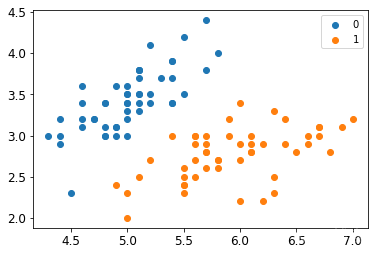
class
SVM:
def
__init__(
self,
max_iter
=
100,
kernel
=
'linear'):
self
.
max_iter
=
max_iter
self
.
_kernel
=
kernel
def
init_args(
self,
features,
labels):
self
.
m,
self
.
n
=
features
.
shape
self
.
X
=
features
self
.
Y
=
labels
self
.
b
=
0
.0
#
将Ei保存在一个列表里
self
.
alpha
=
np
.
ones(
self
.
m)
self
.
E
= [
self
.
_E(
i)
for
i
in
range(
self
.
m)]
#
松弛变量
self
.
C
=
1.0
def
_KKT(
self,
i):
y_g
=
self
.
_g(
i)
*
self
.
Y[
i]
if
self
.
alpha[
i]
==
0:
return
y_g
>=
1
elif
0
<
self
.
alpha[
i]
<
self
.
C:
return
y_g
==
1
else:
return
y_g
<=
1
#
g(
x)
预测值,输入xi(X[
i]
)
def
_g(
self,
i):
r
=
self
.
b
for
j
in
range(
self
.
m):
r
+=
self
.
alpha[
j]
*
self
.
Y[
j]
*
self
.
kernel(
self
.
X[
i],
self
.
X[
j])
return
r
#
核函数
def
kernel(
self,
x1,
x2):
if
self
.
_kernel
==
'linear':
return
sum([
x1[
k]
*
x2[
k]
for
k
in
range(
self
.
n)])
elif
self
.
_kernel
==
'poly':
return (
sum([
x1[
k]
*
x2[
k]
for
k
in
range(
self
.
n)])
+
1)
**
2
return
0
#
E(x)为g(
x)
对输入x的预测值和y的差
def
_E(
self,
i):
return
self
.
_g(
i)
-
self
.
Y[
i]
def
_init_alpha(
self):
#
外层循环首先遍历所有满足0
<
a
<
C的样本点,检验是否满足KKT
index_list
= [
i
for
i
in
range(
self
.
m)
if
0
<
self
.
alpha[
i]
<
self
.
C]
#
否则遍历整个训练集
non_satisfy_list
= [
i
for
i
in
range(
self
.
m)
if
i
not
in
index_list]
index_list
.
extend(
non_satisfy_list)
for
i
in
index_list:
if
self
.
_KKT(
i):
continue
E1
=
self
.
E[
i]
#
如果E2是
+
,选择最小的;如果E2是负的,选择最大的
if
E1
>=
0:
j
=
min(
range(
self
.
m),
key
=
lambda
x:
self
.
E[
x])
else:
j
=
max(
range(
self
.
m),
key
=
lambda
x:
self
.
E[
x])
return
i,
j
def
_compare(
self,
_alpha,
L,
H):
if
_alpha
>
H:
return
H
elif
_alpha
<
L:
return
L
else:
return
_alpha
def
fit(
self,
features,
labels):
self
.
init_args(
features,
labels)
for
t
in
range(
self
.
max_iter):
#
train
i1,
i2
=
self
.
_init_alpha()
#
边界
if
self
.
Y[
i1]
==
self
.
Y[
i2]:
L
=
max(
0,
self
.
alpha[
i1]
+
self
.
alpha[
i2]
-
self
.
C)
H
=
min(
self
.
C,
self
.
alpha[
i1]
+
self
.
alpha[
i2])
else:
L
=
max(
0,
self
.
alpha[
i2]
-
self
.
alpha[
i1])
H
=
min(
self
.
C,
self
.
C
+
self
.
alpha[
i2]
-
self
.
alpha[
i1])
E1
=
self
.
E[
i1]
E2
=
self
.
E[
i2]
#
eta
=
K11
+
K22
-
2
K12
eta
=
self
.
kernel(
self
.
X[
i1],
self
.
X[
i1])
+
self
.
kernel(
self
.
X[
i2],
self
.
X[
i2])
-
2
*
self
.
kernel(
self
.
X[
i1],
self
.
X[
i2])
if
eta
<=
0:
#
print(
'eta <= 0')
continue
alpha2_new_unc
=
self
.
alpha[
i2]
+
self
.
Y[
i2]
* (
E1
-
E2)
/
eta
#此处有修改,根据书上应该是E1
-
E2,书上130
-
131
页
alpha2_new
=
self
.
_compare(
alpha2_new_unc,
L,
H)
alpha1_new
=
self
.
alpha[
i1]
+
self
.
Y[
i1]
*
self
.
Y[
i2]
* (
self
.
alpha[
i2]
-
alpha2_new)
b1_new
=
-
E1
-
self
.
Y[
i1]
*
self
.
kernel(
self
.
X[
i1],
self
.
X[
i1])
* (
alpha1_new
-
self
.
alpha[
i1])
-
self
.
Y[
i2]
*
self
.
kernel(
self
.
X[
i2],
self
.
X[
i1])
* (
alpha2_new
-
self
.
alpha[
i2])
+
self
.
b
b2_new
=
-
E2
-
self
.
Y[
i1]
*
self
.
kernel(
self
.
X[
i1],
self
.
X[
i2])
* (
alpha1_new
-
self
.
alpha[
i1])
-
self
.
Y[
i2]
*
self
.
kernel(
self
.
X[
i2],
self
.
X[
i2])
* (
alpha2_new
-
self
.
alpha[
i2])
+
self
.
b
if
0
<
alpha1_new
<
self
.
C:
b_new
=
b1_new
elif
0
<
alpha2_new
<
self
.
C:
b_new
=
b2_new
else:
#
选择中点
b_new
= (
b1_new
+
b2_new)
/
2
#
更新参数
self
.
alpha[
i1]
=
alpha1_new
self
.
alpha[
i2]
=
alpha2_new
self
.
b
=
b_new
self
.
E[
i1]
=
self
.
_E(
i1)
self
.
E[
i2]
=
self
.
_E(
i2)
return
'train done!'
def
predict(
self,
data):
r
=
self
.
b
for
i
in
range(
self
.
m):
r
+=
self
.
alpha[
i]
*
self
.
Y[
i]
*
self
.
kernel(
data,
self
.
X[
i])
return
1
if
r
>
0
else
-
1
def
score(
self,
X_test,
y_test):
right_count
=
0
for
i
in
range(
len(
X_test)):
result
=
self
.
predict(
X_test[
i])
if
result
==
y_test[
i]:
right_count
+=
1
return
right_count
/
len(
X_test)
def
_weight(
self):
#
linear
model
yx
=
self
.
Y
.
reshape(
-
1,
1)
*
self
.
X
self
.
w
=
np
.
dot(
yx
.
T,
self
.
alpha)
return
self
.
w
- 1.
- 2.
- 3.
- 4.
- 5.
- 6.
- 7.
- 8.
- 9.
- 10.
- 11.
- 12.
- 13.
- 14.
- 15.
- 16.
- 17.
- 18.
- 19.
- 20.
- 21.
- 22.
- 23.
- 24.
- 25.
- 26.
- 27.
- 28.
- 29.
- 30.
- 31.
- 32.
- 33.
- 34.
- 35.
- 36.
- 37.
- 38.
- 39.
- 40.
- 41.
- 42.
- 43.
- 44.
- 45.
- 46.
- 47.
- 48.
- 49.
- 50.
- 51.
- 52.
- 53.
- 54.
- 55.
- 56.
- 57.
- 58.
- 59.
- 60.
- 61.
- 62.
- 63.
- 64.
- 65.
- 66.
- 67.
- 68.
- 69.
- 70.
- 71.
- 72.
- 73.
- 74.
- 75.
- 76.
- 77.
- 78.
- 79.
- 80.
- 81.
- 82.
- 83.
- 84.
- 85.
- 86.
- 87.
- 88.
- 89.
- 90.
- 91.
- 92.
- 93.
- 94.
- 95.
- 96.
- 97.
- 98.
- 99.
- 100.
- 101.
- 102.
- 103.
- 104.
- 105.
- 106.
- 107.
- 108.
- 109.
- 110.
- 111.
- 112.
- 113.
- 114.
- 115.
- 116.
- 117.
- 118.
- 119.
- 120.
- 121.
- 122.
- 123.
- 124.
- 125.
- 126.
- 127.
- 128.
- 129.
- 130.
- 131.
- 132.
- 133.
- 134.
- 135.
- 136.
- 137.
- 138.
- 139.
- 140.
- 141.
- 142.
- 143.
- 144.
- 145.
- 146.
- 147.
- 148.
- 149.
- 150.
- 151.
参考
- Prof. Andrew Ng. Machine Learning. Stanford University
- 李航,《统计学习方法》,清华大学出版社
边栏推荐
- The maximum validity period of an SSL certificate is 13 months. Is it necessary to apply for multiple years at a time?
- 高项 03 项目立项管理
- SAP ALV data export many of the bugs
- Forest Program dfs+tanjar仙人掌
- SAP ALV 数据导出被截断的bug
- Learning Notes---Machine Learning
- DSP+ARM+FPGA高速PCIE/千兆网口信号仿真介绍
- leetcode:55. 跳跃游戏
- ImportError: cannot import name ‘imresize‘
- Codeforces Round #359 (Div. 2) C. Robbers' watch 暴力枚举
猜你喜欢
随机推荐
Sklearn data preprocessing
Pytorch 训练技巧
【sqlite3】sqlite3.OperationalError: table addresses has 7 columns but 6 values were supplied
2017icpc沈阳 G Infinite Fraction Path BFS+剪枝
Flexible and easy-to-use sql monitoring script part7
线程API
SAP ALV 数据导出被截断的bug
差分约束-图论
leetcode:55. 跳跃游戏
bzoj 5333 [Sdoi2018]荣誉称号
找出数组中不重复的值php
【报错】Root Cause com.mysql.jdbc.exceptions.jdbc4.CommunicationsException: Communications link failure
常用测试用例设计方法之正交实验法详解
redis学习笔记
The JVM thread state
P1505 [国家集训队]旅游 树链剖分
Codeforces Round #359 (Div. 2) C. Robbers' watch Violent Enumeration
JSONObject遍历的时候顺序不一致,导致数据对应出错
Better Scroll Y上下滚动无法上拉滚动解决办法
car-price-deeplearning-0411
